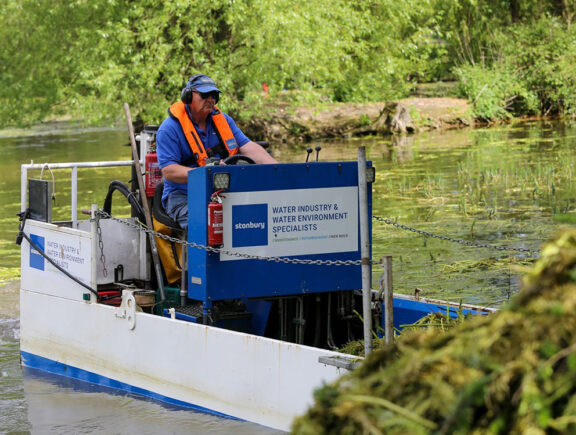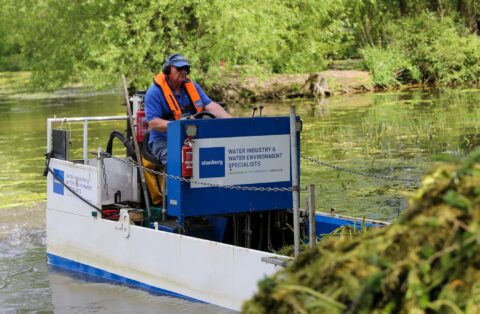Mechanical methods
Stonbury employ several mechanical means of weed removal. Stonbury’s weed harvester boats are suitable for removing vegetation from large expanses of water, as the machine cuts and collects plant matter at the same time. It is very effective for Floating Pennywort.
Another tool is the Truxor, an amphibious machine that works effectively where there is limited access and not enough depth to float a weed harvester-style boat. Where access is limited as it can track into the water rather than rely on a Hiab or slipway.
For grass and overgrowth of native species on banks Stonbury’s teams use mowers, strimmers and cutters, along with rakes, razors, and chains within the water course. Where possible, battery-powered tools are used.
Teams are also deployed to complete hand pulling where water levels are low and of high ecological importance, such as in Sites of Special Scientific Interest (SSSI) where there may be rare flowers and protected species such as Great Crest Newts and Water Voles.
Chemical methods
In many cases Stonbury employs chemical means of weed elimination such as glyphosate for non-submerged species, administered with a hand-held sprayer. Herbicides offer a safe, efficient, and cost-effective solution. It is particularly effective as it kills the whole plant so reduces repeated management. It also causes a lot less disturbance to the channel bed and banks than traditional dredging.
Stonbury is also qualified to provide stem injection for problematic Japanese knotweed. The stem injection system works by delivering a measured dose of herbicide to the centre of the target plant rather than the folia surface, eliminating the risk of spray drift contaminating watercourses or other sensitive vegetation.
Biological methods
Finally, Stonbury offers some biological methods of weed control, including UV dyes and barley straw sausages, which combat excessive algal growth in lakes by releasing chemicals when they decompose.
Stonbury has also deployed Azolla weevils to sites in Oxford where dominance of water fern (Azollla filiculoides) in ponds blocks out sunlight and disrupts the natural ecology.













